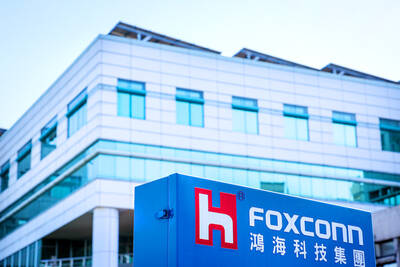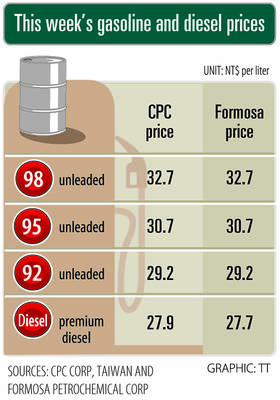Tending to his camels in Petra, Jordan’s spectacular archeological marvel hidden deep in a desert canyon, Hussein Bdoul is all smiles: The tourists are back.
After years in which the COVID-19 pandemic turned the storied “Rose City” into a ghost town, the father of seven is back at work, offering visitors rides on his decorated animals.
“Tourism has returned and the numbers are even greater,” said Bdoul, 35, wearing Bedouin garb with a red keffiyeh over his long black hair, reflecting on a resurgence last year.

Photo: AFP
“At the time of the coronavirus pandemic, we did not see anyone in Petra,” Bdoul said, adding that it was a disaster for the town where “90 percent of people work in tourism.”
Jordan tourism authorities said that Petra is back in business and drew 900,000 visitors last year, close to the record of one million set in 2019.
Jordan received 4.6 million visitors last year — almost four times the level from 2020 — earning the country US$5.3 billion.
Top draw Petra, famous for its stunning temples hewn out of the rose-pink cliffs, is a UNESCO World Heritage Site and was chosen as one of the New Seven Wonders of the World in a 2007 online poll.
It was built in 312 BC as the capital of the ancient Arab kingdom of the Nabataeans, which fell to the Romans in 106 BC.
“This place and the colors are incredible,” marveled French student Alia, 16, taking a break from exploring with her mother to check out a souvenir stand.
About 1,700 people make a living from Petra as tour guides, trinket sellers or by taking visitors through the site on donkeys, horses, camels or electric buggies.
“We breathed a sigh of relief when we saw the return of tourists,” said Muhammad Samahin, 16, selling drinks while sat on woven rugs inside the Moon Cave near the famed Treasury site.
Petra Development and Tourism Regional Authority head Suleiman Farajat said the post-pandemic tourism comeback had exceeded all expectations.
At the height of the pandemic, “there were days when there were no tourists” in Petra, located 230km south of the capital, Amman.
The recovery was helped by official promotional campaigns in new overseas markets, low-cost airline flights and new hotel rooms, Farajat said.
Petra has 4,000 rooms, and permits have been granted for three new five-star hotels, so capacity would soon almost double from 2019, he said.
“If things continue this way, we may reach, during the next three to four years, the threshold of two million tourists in Petra” every year, he added.

Hon Hai Precision Industry Co (鴻海精密) yesterday said that its research institute has launched its first advanced artificial intelligence (AI) large language model (LLM) using traditional Chinese, with technology assistance from Nvidia Corp. Hon Hai, also known as Foxconn Technology Group (富士康科技集團), said the LLM, FoxBrain, is expected to improve its data analysis capabilities for smart manufacturing, and electric vehicle and smart city development. An LLM is a type of AI trained on vast amounts of text data and uses deep learning techniques, particularly neural networks, to process and generate language. They are essential for building and improving AI-powered servers. Nvidia provided assistance

GREAT SUCCESS: Republican Senator Todd Young expressed surprise at Trump’s comments and said he expects the administration to keep the program running US lawmakers who helped secure billions of dollars in subsidies for domestic semiconductor manufacturing rejected US President Donald Trump’s call to revoke the 2022 CHIPS and Science Act, signaling that any repeal effort in the US Congress would fall short. US Senate Minority Leader Chuck Schumer, who negotiated the law, on Wednesday said that Trump’s demand would fail, while a top Republican proponent, US Senator Todd Young, expressed surprise at the president’s comments and said he expects the administration to keep the program running. The CHIPS Act is “essential for America leading the world in tech, leading the world in AI [artificial

DOMESTIC SUPPLY: The probe comes as Donald Trump has called for the repeal of the US$52.7 billion CHIPS and Science Act, which the US Congress passed in 2022 The Office of the US Trade Representative is to hold a hearing tomorrow into older Chinese-made “legacy” semiconductors that could heap more US tariffs on chips from China that power everyday goods from cars to washing machines to telecoms equipment. The probe, which began during former US president Joe Biden’s tenure in December last year, aims to protect US and other semiconductor producers from China’s massive state-driven buildup of domestic chip supply. A 50 percent US tariff on Chinese semiconductors began on Jan. 1. Legacy chips use older manufacturing processes introduced more than a decade ago and are often far simpler than

Gasoline and diesel prices this week are to decrease NT$0.5 and NT$1 per liter respectively as international crude prices continued to fall last week, CPC Corp, Taiwan (CPC, 台灣中油) and Formosa Petrochemical Corp (台塑石化) said yesterday. Effective today, gasoline prices at CPC and Formosa stations are to decrease to NT$29.2, NT$30.7 and NT$32.7 per liter for 92, 95 and 98-octane unleaded gasoline respectively, while premium diesel is to cost NT$27.9 per liter at CPC stations and NT$27.7 at Formosa pumps, the companies said in separate statements. Global crude oil prices dropped last week after the eight OPEC+ members said they would